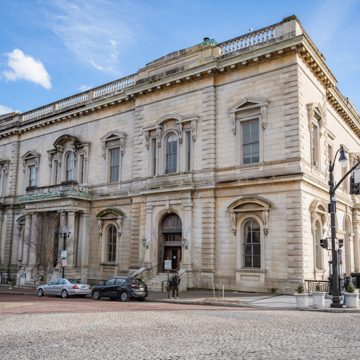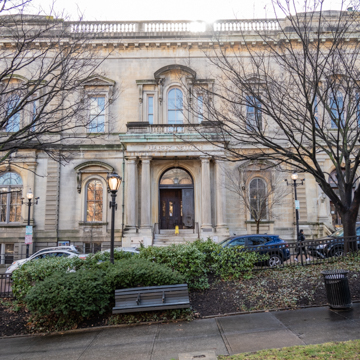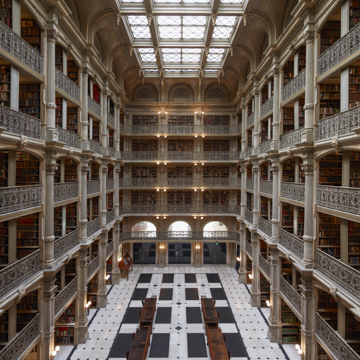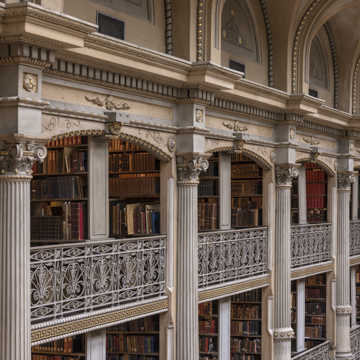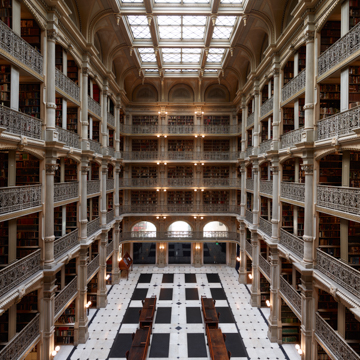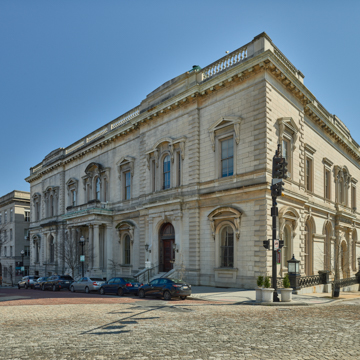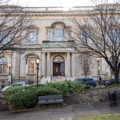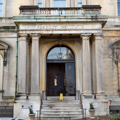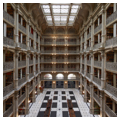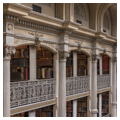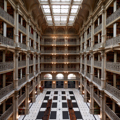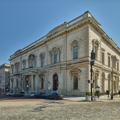A gift to the city from philanthropist George Peabody, the institute that bears his name was built as a cultural center offering a free public library, conservatory of music, art gallery, and lecture hall. It is noteworthy for its Renaissance Revival design and innovative building technology, representing a collaboration between English immigrant architect Lind and Baltimore architect Neilson. One of the first buildings in Baltimore to use structural iron, its stylish facade was paired with structural iron supplied by local manufacturers Bartlett, Robbins and Company, with wrought-iron beams from the Phoenix Iron Company of Pennsylvania and iron roof trusses from the Kellogg Bridge Company of Buffalo. Providing both economy and efficiency of design, the delicate cast- and wrought-iron frame permits grand open spaces and a pleasing environment for the valuable book collection. Referred to as the Cathedral of Books, the spectacular gilded ironwork comprises six stories of alcove book stacks.
Founder George Peabody came from humble beginnings to become an international merchant and financier, eventually amassing a fortune through the dry goods firm known as Riggs, Peabody and Company. He lived in Baltimore for twenty-two years, moving from there to London to better pursue his banking and commercial interests. Peabody was the first of the great philanthropists of the modern era, dedicating his considerable fortune largely towards providing educational opportunities. In addition to the Peabody Institute in Baltimore, he funded similar institutes in Massachusetts, Vermont, and Washington, D.C., as well as three museums of science, two state historical societies, and the Peabody Education Fund.
References
Beirne, Francis F. “Edmund G. Lind.” Baltimore Sun, November 8, 1954.
Dilts, James D., and John Dorsey. A Guide to Baltimore Architecture. 3rd ed. Centreville, MD: Tidewater Publishers, 1997.
Peabody Archives, Peabody Institute.
Price, Virginia. “Peabody Institute,” HABS No. MD-1157, Historic American Buildings Survey, National Park Service, 2004. Prints and Photographs Division, Library of Congress, Washington, D.C.
Stanton, Phoebe B. “The Peabody Library.” Maryland Historical Magazine 86 (Winter 1991): 423-435.















